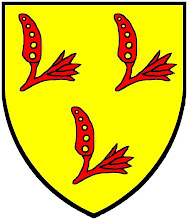[1] More precisely, his dam, Sasha, was a black lab mix, and his sire, Charlie, was a collie mix.
The latter is a question I wonder about a lot. I cannot lie; size matters to me. I like big dogs. So, I did what any other geek would do: I tracked down data, built charts, and extrapolated.
Let's see what Blogger can do with graphics... When looking at these charts, here are some things to keep in mind.
- Each data series only represents about 10-13 actual points (apparently) from a single dog. So, don't read too much into every little bounce in the data.
- The dogs are well spread-out in size. That makes this chart fairly good for use with any dog (although obviously more dogs would improve it greatly).
The (smoothed) real data is in the first chart, on the left. I then normalized each dog's growth to its full adult weight (middle chart), and expressed it as percentages. Multiplication factors appear on the right, so if a dog is at 25% of their adult weight, "x4" appears on the right.
Dexter is 19 pounds right now, at 11-1/2 weeks. That puts him in-between the green (small dog) and yellow (medium-sized dog) data lines. I noticed a growth spurt (a full pound) over last weekend, and that brings us to an interesting feature in the charts. Notice the bumps in most of the growth lines at the 12th week? The third (right-hand) chart expands this section, making the 12th-week growth spurt fairly obvious. Most of these dogs gained between 10%-18% of their weight in their 12th week (on average, they gained 2.75%-4%/week in their first 20 weeks).
And Dexter's on that cusp.
Curiously, his appetite has dropped off. You parents reading this might sympathize here: where is this weight coming from?! He used to eat 12 oz twice a day; today he abandoned his breakfast after only 7 oz.
Now, let's add in Dexter's weight data, and try to extrapolate how big he's going to be.

He's between the "small" and "medium" dogs in weight right now (the green and yellow lines, respectively). Using these as the closest estimators, I can now predict he will be about 50# (between 38# and 55#) when fully grown. As for his current growth spurt, I expect him to add 6-7# over this next week (1/3 of his current weight, or 13% of his adult weight).
One last interesting note. While researching this data, I came across predictions that a dog would reach 50% of its adult weight by week 12, or by week 14 (depending on the source). I think the 12th-week growth spurt shown above makes the problem with this predictor pretty clear: there's a big difference between the 12th- and 14th-weeks' weights, so this is an especially poor time to predict adult dog weight.
I wonder if humans tend to follow similar growth patterns? That is, if you track children's weight, are there predictable growth spurt periods? I'd expect so. Of course, individuals will always deviate from expectations, but it would be interesting to see such a study.






No comments:
Post a Comment